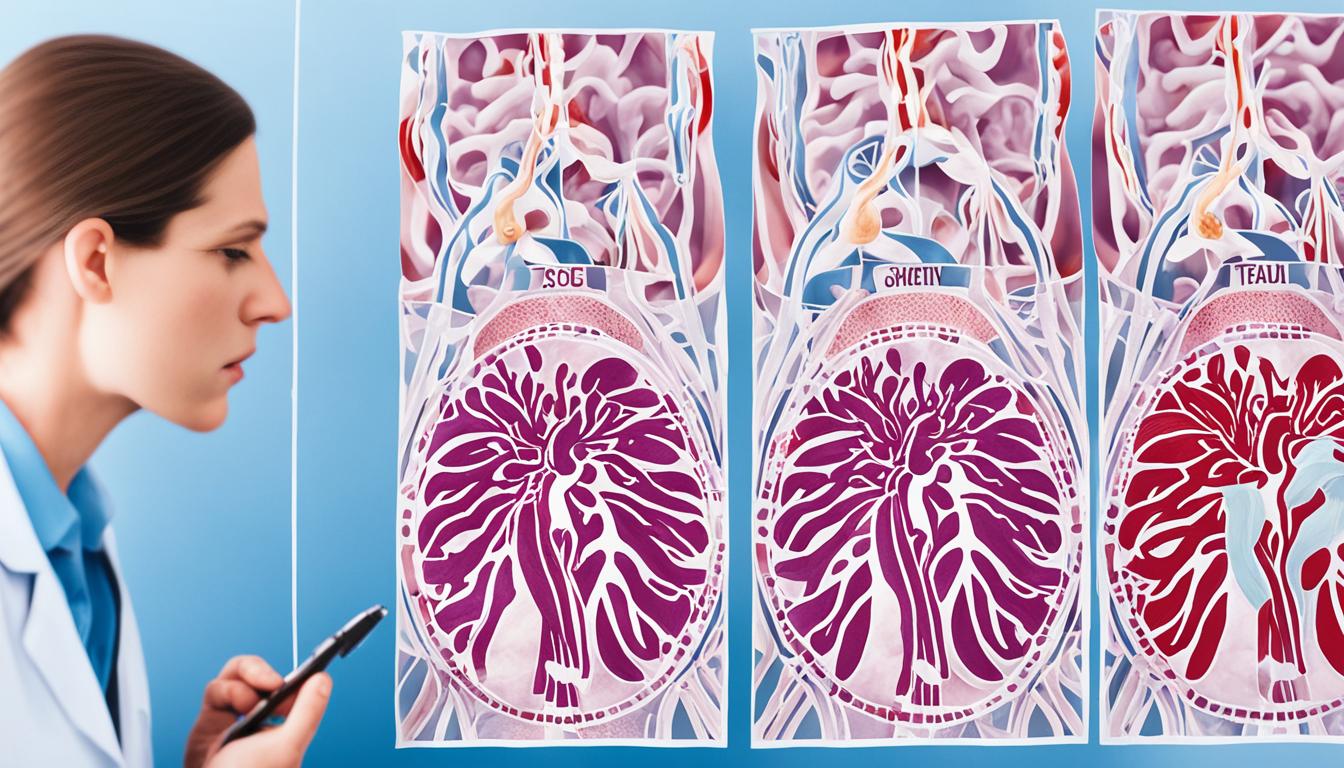Tuberculosis (TB) is a chronic disease caused by the bacteria Mycobacterium tuberculosis. It ranks high among global disease-related deaths. The illness mainly targets the lungs, causing pulmonary TB.
The disease spreads when someone with active TB coughs or sneezes, sending out infectious droplets. If these droplets are inhaled, not everyone gets sick right away. Many people have the bacteria but don’t show any symptoms; this is called latent TB infection.
For those that do get sick, it’s known as active TB. A small percentage of those with latent TB will develop active disease. Diagnosis is done with special tests, and treatment involves taking a few different antibiotics at once.
Key Takeaways
- Tuberculosis is caused by the bacteria Mycobacterium tuberculosis and primarily affects the lungs.
- The disease is spread through the air when a person with active TB coughs or sneezes.
- Most individuals with TB have latent TB infection, where the bacteria remain dormant in the body.
- Diagnosis of TB requires specialized tests.
- Treatment involves the use of multiple antibiotics.
Transmission and Spread of Tuberculosis
Tuberculosis, or TB, is a highly contagious illness. It moves from one person to another when we breathe in infected droplets. These droplets come from someone who is actively coughing or sneezing.
The bacteria, Mycobacterium tuberculosis, stay in the air for hours. This means people nearby can breathe them in.
Getting TB often needs long, close contact with someone who is sick. This might happen in homes, workplaces, or crowded areas. Sharing small spaces makes catching the disease more likely.
People who are already sick may easily get active TB. This includes those with HIV, certain chronic diseases, or poor nutrition. Their bodies can’t fight the bacteria as well, so the risk goes up.
To stop TB from spreading, finding and treating those who are sick is vital. It’s also important to make sure places like homes, schools, and offices have enough fresh air. Keeping good habits, like covering coughs, helps a lot too.
The air we share is the main way TB moves from one person to the next. That’s why keeping the air clean and avoiding crowded places is crucial. Knowing how TB spreads and taking steps to stop it is key to fighting this health challenge.
Types of Tuberculosis and TB Cases in the U.S.
Tuberculosis takes different forms, like active TB disease and latent TB infection. It’s a complex illness.
When someone has active TB, the bacteria rapidly grow in their organs. This causes a cough, fatigue, and weight loss.
Latent TB means you carry the bacteria but don’t feel sick. You also can’t spread the disease.
In recent years, TB cases had been going down in the U.S. Unfortunately, since 2022, more cases have been reported.
These cases often involve people from places where TB is common. People without easy healthcare access are also at risk.
Conclusion
Tuberculosis is still a big problem around the world, affecting millions yearly. It is important to diagnose and treat TB quickly. Researchers are now looking at new ways to fight TB, like using stem cells.
Stem cells, especially mesenchymal stem cells, can help by changing how our immune system works and by reducing swelling. Because of this, many are hopeful that stem cell therapy could be a key in treating TB. In Thailand, scientists are leading this new research in their fight against TB.
Improvements in TB treatments, such as exploring stem cell therapy, bring hope for better results. Thailand’s strong efforts in using new treatments show its commitment to ending TB and better health around the world.

